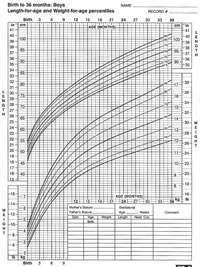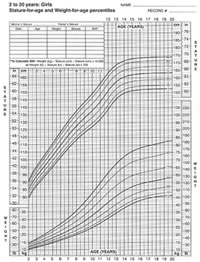
Section 2: Assessment Guidelines
Once accurate measurements are made, the data are compared to growth charts that are based on the growth patterns of thousands of children in the United States (CDC Growth Charts) or charts based on thousands of measurements (WHO Growth Standards). This section reviews the development and use of these growth charts. These charts are a compilation of data-measurements of children who participated in the National Health and Nutrition Examination Surveys (NHANES): NHANES (1971-74), NHANES II (1976-80), and NHANES III (1988-94).
Information about the growth charts and downloadable versions of the charts can be found on the CDC website: http://www.cdc.gov/growthcharts.
 |
WHO growth charts are available for children 0-24 months (weight-for-age, length-for-age, head circumference-for-age,
weight-for-length)
|
 |
Charts for 2 to 20-year
olds (weight-for-age, stature-for-age, Body
Mass Index [BMI]-for-age, weight-for-stature [for children 77-121
cm only])
|